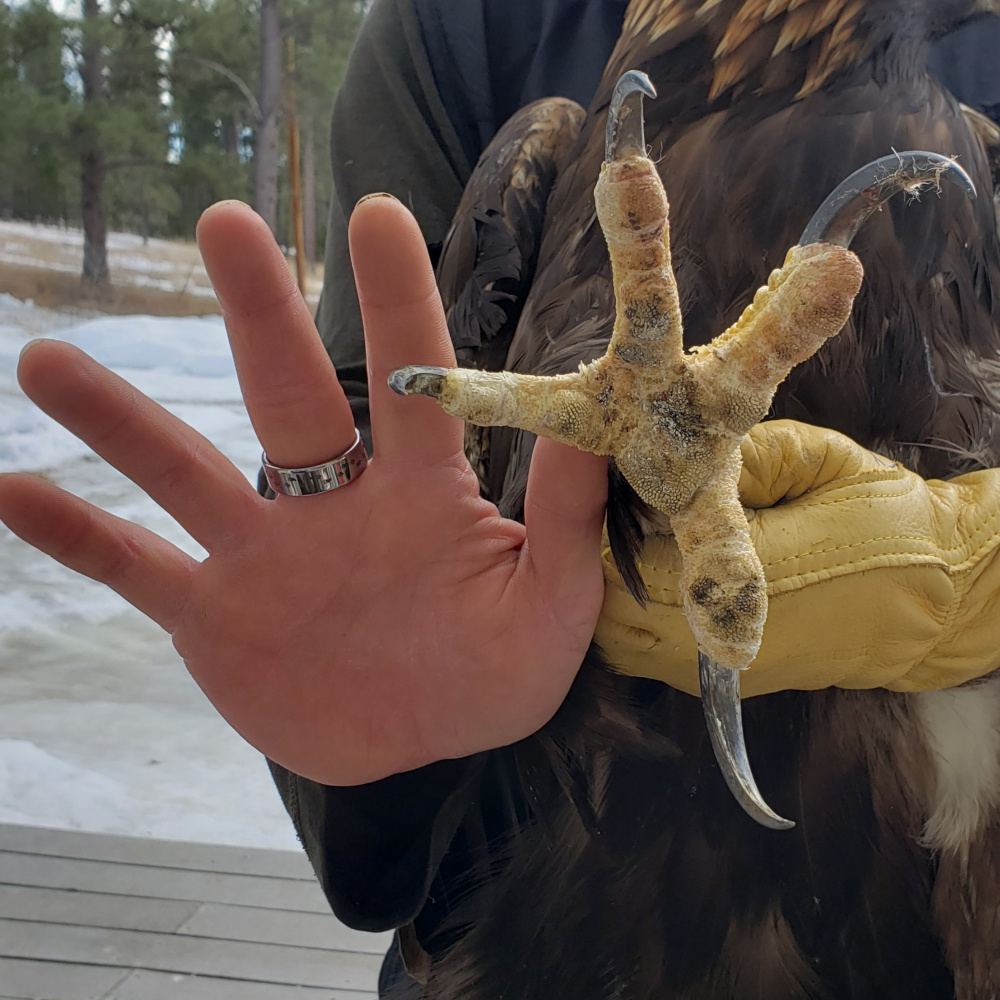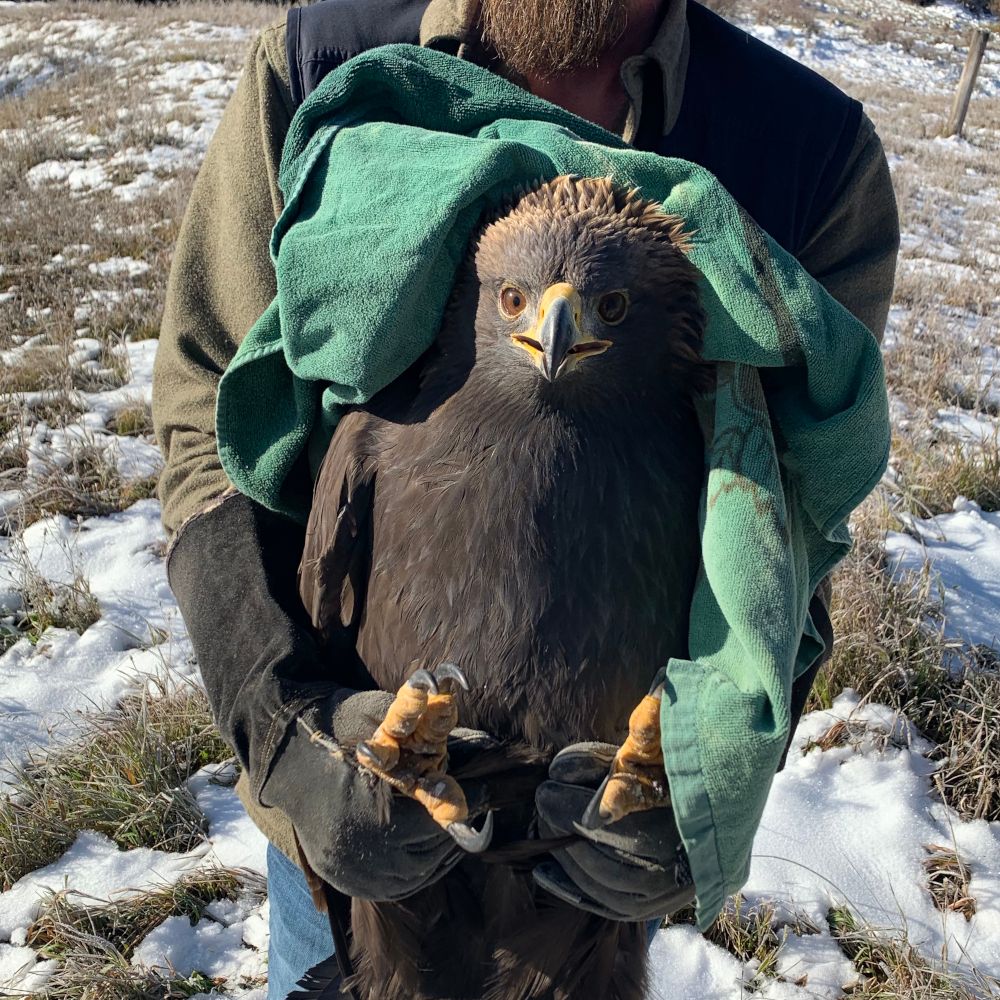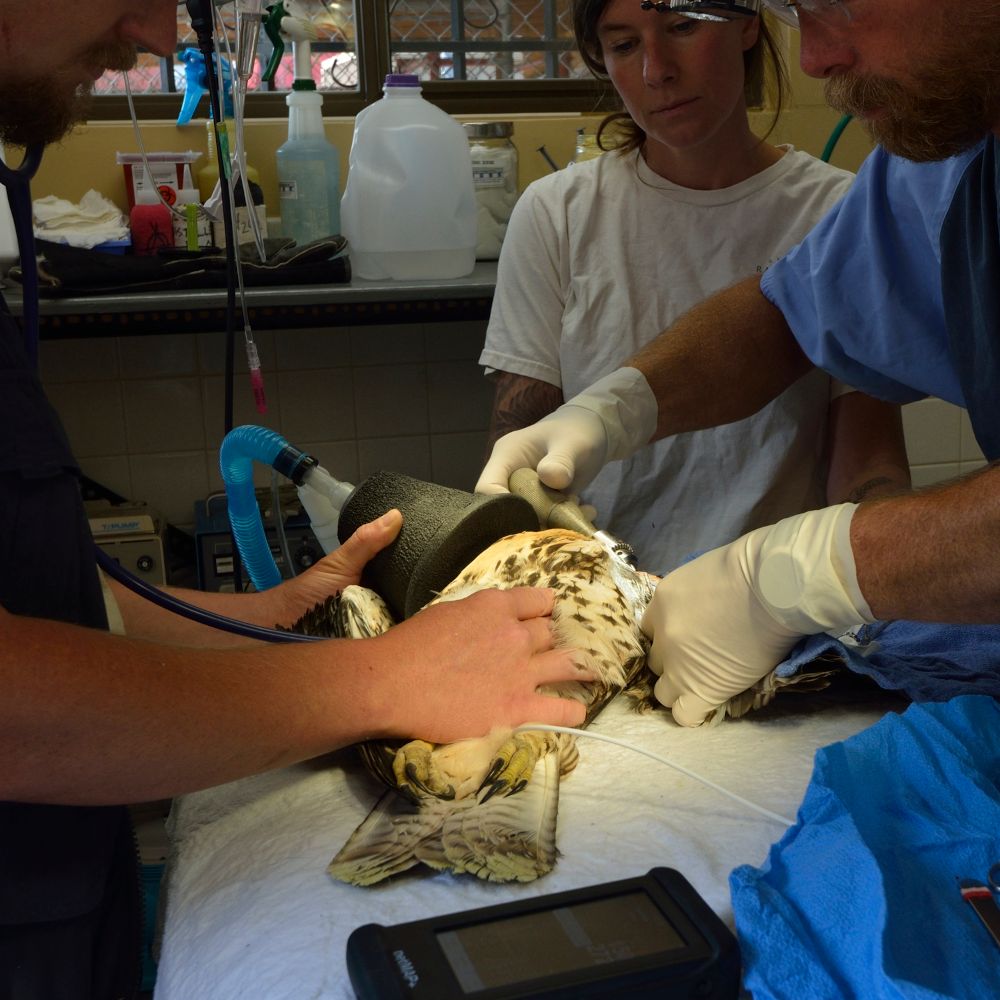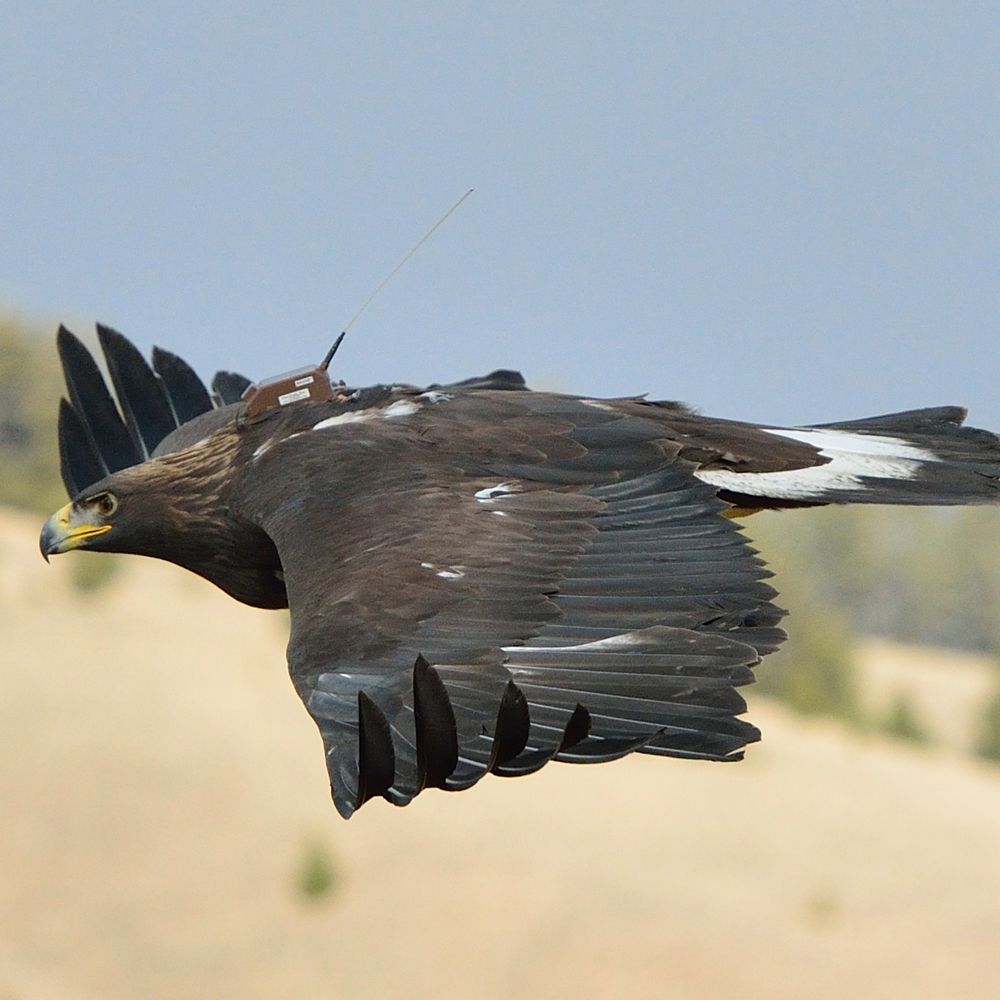 Raptor Emergencies Call or Text 406-210-3468
Raptor Emergencies Call or Text 406-210-3468
What Are Raptors?

Raptors (birds of prey) are characterized by having strong feet with talons made for grasping and killing prey, and powerful beaks. Many have keen eyesight for detecting prey at a distance (eagles) or specialized senses for hunting at night (owls). Many species of raptors are highly maneuverable (sharp shinned hawks) and the peregrine falcon is the fastest animal in the world, reaching diving speeds of over 185 miles an hour when hunting.
Raptors are a vital part of Montana's ecology and as apex predators they serve as a way to measure the condition of the local habitat. Where there are healthy raptors, there is a healthy environment.[1][2]
Learn More About Raptors
| Raptor name | Alpha Code (Ornithologist short name) |
|---|---|
| Eagles | |
| Golden Eagle | GOEA |
| Bald Eagle | BAEA |
| Buteos | |
| Red-tailed Hawk | RTHA |
| Swainson's Hawk |
SWHA |
| Rough-legged Hawk |
RLHA |
| Ferruginous hawk |
FEHA |
| Accipiters |
|
| Northern Goshawk |
NOGO |
| Cooper's Hawk |
COHA |
| Sharp-shinned hawk |
SSHA |
| Falcons |
|
| Peregrine Falcon |
PEFA |
| Prairie Falcon |
PRFA |
| Merlin | MERL |
| American Kestrel |
AMKE |
| Gyrfalcon |
GYFA |
| Unique Species | |
| Osprey |
OSPR |
| Northern Harriers |
NOHA |
| Turkey Vulture |
TUVU |
| Owls | |
| Great Horned Owl | GHOW |
| Great Gray Owl | GGOW |
| Snowy Owl |
SNOW |
| Barn Owl | BNOW |
| Barred Owl |
BAOW |
| Short-eared Owl |
SEOW |
| Long-eared Owl | LEOW |
| Northern Saw-whet Owl |
NSWO |
| Northern Pygmy-Owl |
NOPO |
| Northern Hawk Owl |
NHOW |
| Flammulated Owl |
FLOW |
| Western Screech-Owl |
WESO |
| Eastern Screech-Owl |
EASO |
| Boreal Owl |
BOOW |
| Burrowing Owl |
BUOW |
Eagle is the common name for many large birds of prey of the family Accipitridae. Eagles are large, powerfully built, with heavy heads and beaks, and keen eyesight. Some eagles have visual acuity up to 8 times that of humans! 1
Buteo is a genus of medium to fairly large, wide-ranging raptors with a robust, sturdy body and broad wings. They also have short-tailed lugs with spare and labored wing beats. 1 2
Accipiters are small, narrow-tailed forest dwellers with short, rapid, bursting flaps, punctuated by a glide. 1
Falcons, when fully grown, have thin, tapered wings, which enable them to fly at high speed and change direction rapidly. Fledgling falcons, in their first year of flying, have longer flight feathers, which make their configuration more like that of a general-purpose bird such as a broad wing. This makes flying easier while learning the exceptional skills required to be effective hunters as adults.1 The Peregrine falcon is the fastest animal in the world, being clocked at 242 miles per hour while in its hunting stoop (dive)! 1
Owls are mostly solitary and nocturnal birds of prey typified by an upright stance, a large, broad head, binocular vision, binaural hearing, sharp talons, and feathers adapted for silent flight. The asymmetrical ear placement allows owls to pinpoint the location of its prey. This is especially true for strictly nocturnal species. With ears set at different places, the owl is able to determine the direction from which the sound is coming by the minute difference in time that it takes for the sound waves to reachg the left and right ears. The owl turns its head until the sound reaches both ears at the same time, at which point it is directly facing the source of the sound.1
Bird banding is the attachment of a small, individually numbered metal or plastic tag to the leg or wing of a wild bird to enable individual identification. This helps in keeping track of the movements of the bird and its life history, further, it increases our knowledge of raptors and aids in conservation efforts. Usually during banding measurements are taken and the conditions of feather molt, subcutaneous fat, age indications and sex are examined and recorded. The subsequent recapture or recovery of the bird can provide information on migration, longevity, mortality, population, territoriality, feeding behavior, and other aspects that are studied by ornithologists.1
People who are banding birds are primarily responsible for the safety and welfare of the birds they study so that stress and risks of injury or death are minimized.1 People banding in North America, Japan, and Russia are required to be permitted, per the Migratory Bird Treaty Act and (in the United States) its associated Federal regulations. 1
Did you see a bird with a band? Report the band number to help with conservation efforts!
Rescue, Rehab, Release, and Research
At Wild Skies we are dedicated to rescuing injured raptors and getting them back out into the wild. Further, we contribute to research efforts to help ensure a healthy and robust ecosystem by supporting these apex predators.

Rescue and Release
Rescuing raptors requires skill, endurance, with a large amount of care, patience, and compassion. Releasing a rehabbed raptor is a joyous event!


